Sustainable Trails Expedition
Northern Territory, Australia
Adventure-trekking across six of the most spectacular National Parks in the Northern Territory
Photo Credit: Kakadu National Park from the air – Tourism NT/Helen Orr
Adventure ambassadors Lisa Marshall and Luke Edwards have teamed up with Wejugo to take on a world-first expedition across the Northern Territory in 2023, in an attempt to adventure-trek the most iconic trails in the region, but with a twist – they want to go about this in the most sustainable way possible, in every aspect of the trip.
Our mission is to showcase the planning, preparation, and highlights of these trails to inspire people to visit these destinations, be well-prepared and contribute to the longevity of our natural places. Lisa and Luke will cover a whopping 300kms on foot and 3300kms, trekking across six spectacular National Parks from Uluru to Kakadu! Sounds like a song…The NT Grand is big.
The distances our adventure ambassadors will cover on foot, the logistics and planning that goes into an adventure of this kind, the scale of the landscape and the massive expanses of untouched earth in the Northern Territory, the challenge of trying to travel sustainably in such a harsh, remote environment with little access to services and facilities in between towns. The history and stories that originate from this magical land. Everything about this adventure seemed BIG to us, and that is how the name NT Grand was born!
They will be privileged to visit:
Uluru Base walk – Uluru-Kata Tjuta National Park
Giles Track – Watarrka National Park
Larapinta Trail – Tjoritja / West MacDonnell National Parl
Katherine River Southern Walking Trails – Nitmiluk National Park
Kakadu – Kakadu National Park
Tabletop – Litchfield National Park
Acknowledgement of Country
We wish to acknowledge the traditional owners and custodians of the lands we have journeyed across, for their long and continued relationship with this land, and for allowing us the privilege of adventuring through this magnificent country in the Northern Territory.
-
Location
Northern Territory, Australia
-
Distance
396km
-
Duration
11 Days
-
When to go
April to November
-
Sleeping
Camping
-
Permit required
Yes
Live video and images of each of the day’s adventures as well as mapping data and key experiences and local contacts from each trail will be captured by the team on their journey. Meaningful content in line with Leave No Trace sustainable adventure will be created and aims to reach out to many Australians to show them a real-life example of trying to travel sustainably.
Who are these hard-core adventurers?
Lisa Marshall and Luke Edwards, first teamed up in 2019 to take on the Queensland 10:10 Great Walks of Queensland in ten days, in partnership with the National Trust and Queensland National Parks. They adventure-trekked (trail ran/hiked) these trails in ten days between Currumbin and Cooktown covering hundreds of kilometers on foot. They interviewed rangers at each location to find out the most important information to equip keen walkers to be better prepared for these trails and to be aware of their impact.
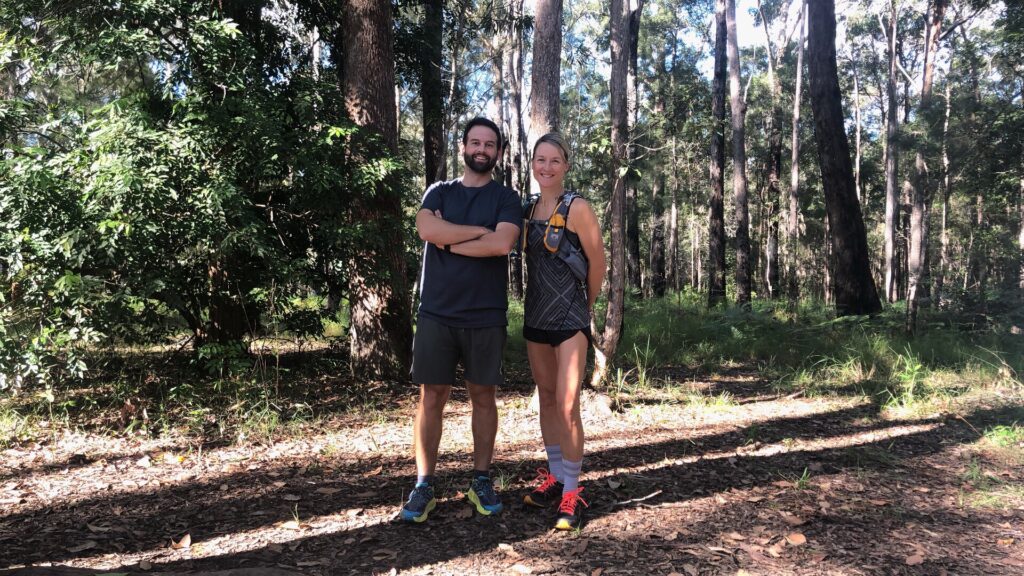
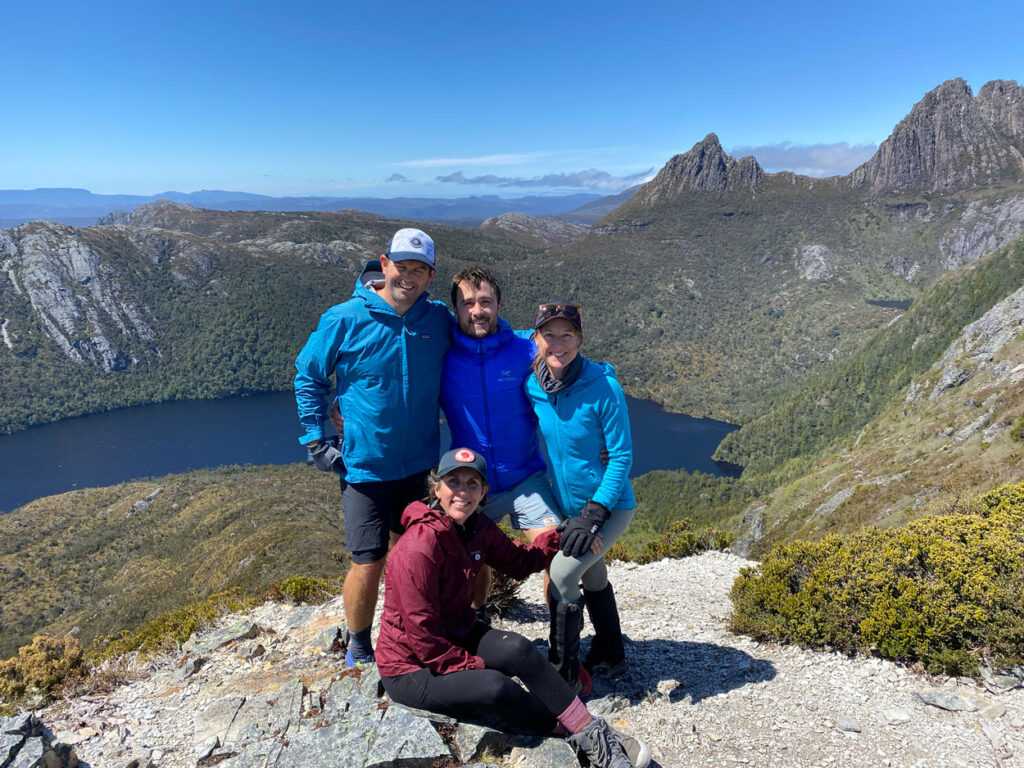
“We started to explore the idea of sustainable adventure and Leave No Trace, and speak to people out on the trails about what that means to them and how we can improve on the way we travel when we undertake such expeditions. It became very apparent to us that there is a need for meaningful, fun but practical content and tips to be shared with adventurers, to help us all to think more about our impact when heading out on to the trails in these very precious wilderness areas.”
LISA MARSHALL
Wejugo was delighted to partner with this team on their expedition to further get the message out there to keen adventure enthusiasts on how to make Adventure Travel more sustainable.
Support Crew
Lisa and Luke will be supported by their long-term adventure buddies Sarah Lees-Barton and Matt Morris, as the essential support crew who will follow the two trail runners with supplies, helping to capture content, and setting up camp at the end of each day. As a Biodynamic Farmer, beekeeper and naturopath, Sarah will nourish the team and source healthy, but practical foods, as well as being a driver, logistics support and navigator. Matt with his background in logistics and planning, will cover off accessibility to supplies, mobile network coverage, gear, fuel, water and all the other aspects of a trip like this that become even more of a challenge given the remoteness of many of the trail locations!
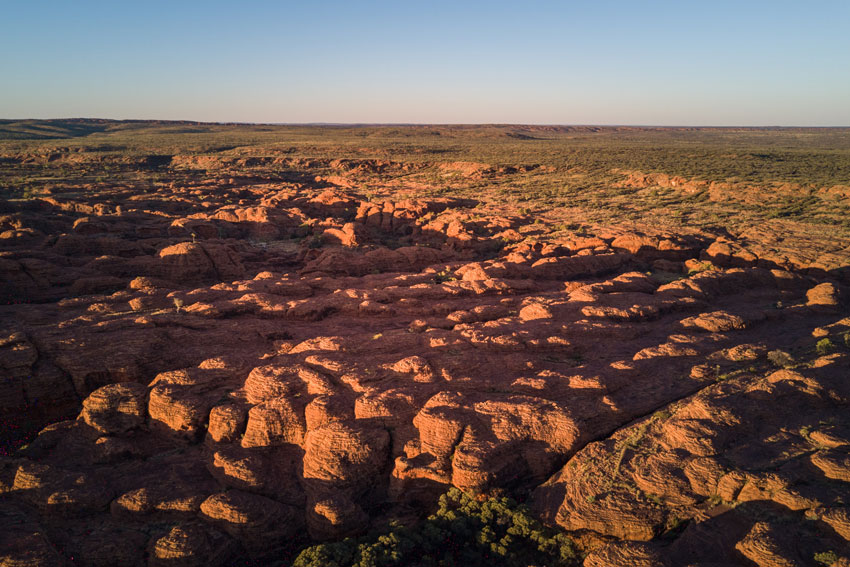
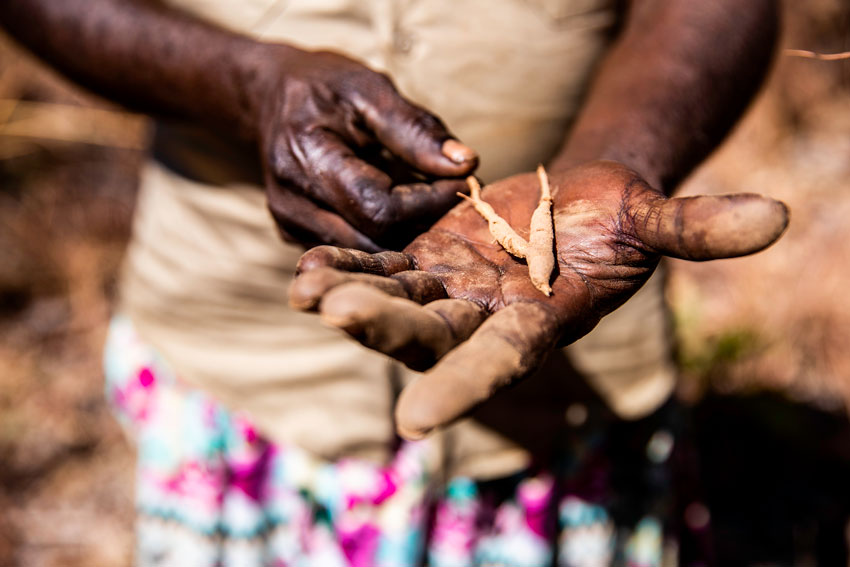
What do you take into consideration when planning a sustainable adventure?
Having an open mind
Firstly, have an open mind and know you will learn a lot of lessons along the way about aspects you never even thought of before as having an impact! Seek out people who can help you understand sustainability and how to aim for it. We are fortunate to have access to support and training from Leave No Trace Australia during the lead up to our expedition, to help us on our journey.
How you source your gear
Seek to borrow or have gear donated to you that can be reused or is sourced sustainably. We are lucky to have access to some good quality gear that has been given to us for the expedition and is sourced and made sustainably. The rest of our gear is stuff we have been using for the last ten years or are borrowing from mates. It can seem exciting to rush out and buy all sorts of new gear for an expedition, but before you do this really take time to sit down with a gear list and work out what is necessary, what you already have, what you can borrow or hire and what are “nice to haves”. Many people rush out and buy hundreds or even thousands of dollars worth of camping and hiking gear and perhaps only use it once a year or so. I’m borrowing a running pack from a friend which I used in 2019 for another adventure and which she uses for training and trail events too. My running shorts were bought from a friend’s local company in Noosa and I’ve been wearing them for the past four years in training and events.
Travel
This is a tricky one – we researched electric vehicles but alas they are not yet at the point where it is possible to charge and drive one across remote areas of the NT. So we have to go with an everyday vehicle, but look at how we can offset this. Flights too – we are seeking reputable organisations that can show us where our carbon offsets will be applied to local areas, hopefully within the region we are visiting.
Food and packaging
Many pre prepared and long life meals are packaged in plastic sachets. Try a few different brands, seek to source local products if possible in the region you are travelling to, and if that is not possible, find companies who are using biodegradable or recyclable packaging. This is a minefield! But it really makes you think about what you source and buy for nutrition on the trail. Use reusable wax wraps or bags to carry food rather than plastic bags. We will not have access to refrigeration for the majority of the expedition so sourcing food that lasts is a must.
Accommodation / Camping
Wherever possible seek out operators that are eco-friendly and apply sustainable practices in the way they operate and the resources/facilities/products they provide.
Ablutions
Toileting, access to refill water and other such daily ablutions which impact the environment. Be mindful of where toilets/long drops are available along the trails and use them wherever possible. Taking care not to throw any litter, wipes, sanitary items or substances into these systems. If you really need to go and are in the middle of nowhere: use a shovel to dig a hole, stay at least 200m away from water sources, camps and the trail. Use natural toilet paper sparingly or better yet carry it out in a separate bag. Fill in the hole.
Use only biodegradable soaps for washing dishes or use sand to scrub out dishes and rinse with water.
7 Principles of Leave No Trace
The following information under these seven principles is recommended as a guide to minimize the impact of your visits to Australia’s natural and cultural areas. “Leave no trace” depends more on attitude and awareness than on rules and regulations.
- PLAN AHEAD AND PREPARE
- CAMP AND HIKE ON DURABLE SURFACES
- PROPERLY DISPOSE OF WASTE
- LEAVE NATURE AS YOU FIND IT
- MINIMIZE CAMPFIRE IMPACT
- RESPECT WILDLIFE
- BE CONSIDERATE OF OTHER VISITORS AND TRADITIONAL LANDOWNERS
Minimal impact travel and outdoor recreation practices need to be flexible and backed up by judgement and experience. Techniques are constantly evolving and improving. A general rule of thumb is to consider the variables of each area in terms of culture, wildlife, vegetation, soil, climate and the uses it receives. Then use this information to determine which recommended techniques to apply.
Itinerary
Day 1: Uluru Base Walk
Uluru, Kata Tjuta National Park
Distance: 10km circuit
Trekking/Trail running time: 1.5 hrs
Highlights
Follow in the footsteps of ancestral ebings; amazing rock formation, rock art paintings; vistas and ancient landscape.
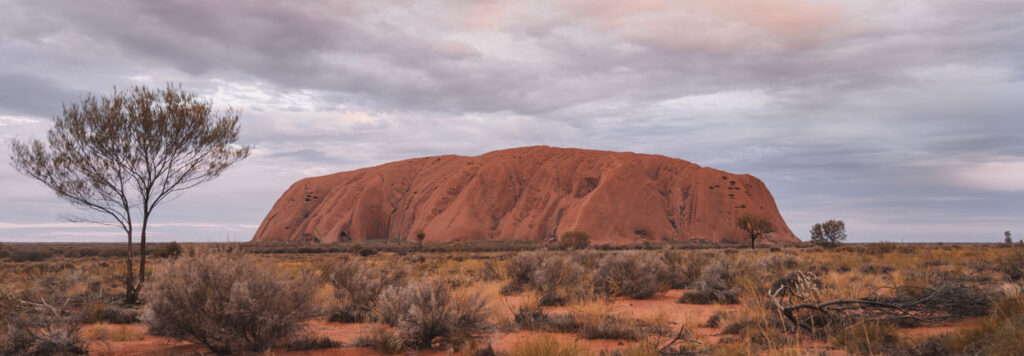
Day 2: Kings Canyon to Kathleen Springs
Giles track, Watarrka National Park
Distance: 22km
Trekking/Trail running time: 4-5 hrs
Highlights
Wildlife, indigenous history and culture, dramatic views across ancient wilderness that remains unchanged, valleys, beehive-shaped sandstone formations and across rocky watercourses, follows the southern rim of the range from Kings Canyon to Kathleen Springs.
Days 3-7: Larapinta Trail
Tjoritja, West MacDonnell National National Park
Telegraph Station to Simpson Gap/Rungutirpa
Distance: 24km
Trekking/Trail running time: 4-5 hrs
Simpson Gap to Standley Chasm
Distance: 41km
Trekking/Trail running time: 7-9 hrs
Serpentine Gorge to Ormiston Gorge
Distance: 42 km
Trekking/Trail running time: 7-9 hrs
Ormiston Gorge to Redbank Gorge
Distance: 35 km
Trekking/Trail running time: 7-8 hrs
Redbank Gorge to Mt Sonder Summit return
Distance: 16km
Trekking/Trail running time: 4 hrs
Highlights
Spectacular large scale views, 600 species of flora adorn the landscape of the MacDonnells, ranging in size from the silvery spinifex grass to the tall, shapely ghost gums along the watercourses. Explore the restored stone buildings of the Telegraph station and learn about its history through interactive displays in the museum. Rungutirpa was the mythical home of a group of giant goanna ancestors. This is one of the most prominent of the many gaps in the West MacDonnell Ranges. Billabong, ancient ghost gums, great views.
Stunning views of the ranges, range of native flora, including relic species from Central Australia’s tropical past, Ormiston River has carved a long, deep channel through the quartzite rock of the West MacDonnells.
MT Sonder is the Northern Territory’s fourth highest peak, at 1,280 metres above sea level, vertical ascent is over 900 metres from the valley floor and the trail is described as being “rocky, loose and occasionally disappearing”.
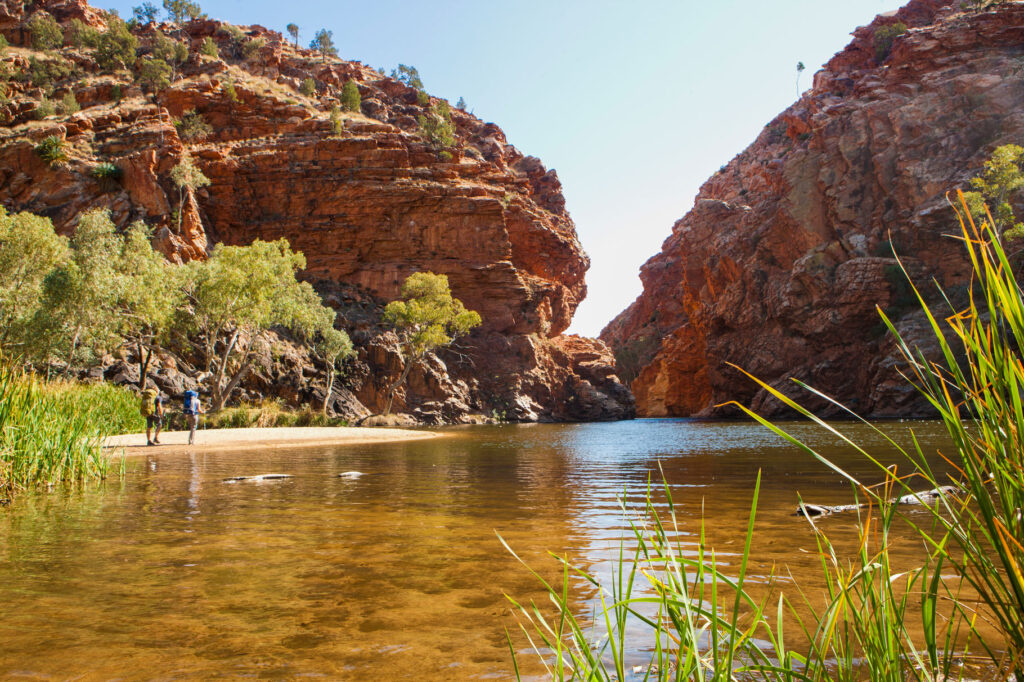
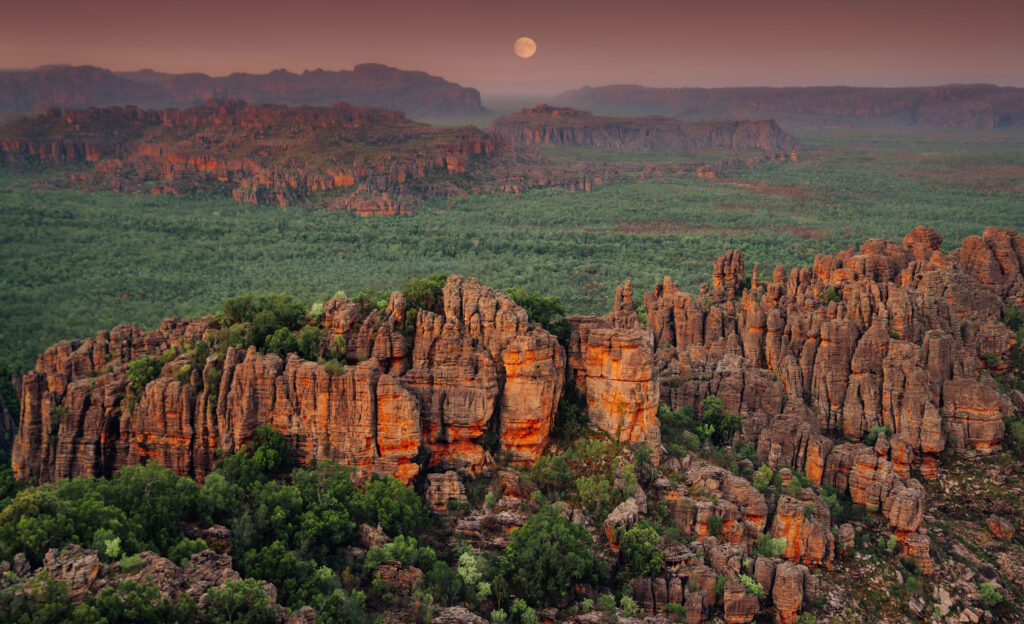
Day 8: Travel to Nitmiluk National Park
The team has a 13-hour drive from Alice Springs to Nitmiluk National Park.
Day 9: Katherine River Southern Walking Trails to Eighth Gorge
Nitmiluk National Park
Distance: 39km circut – Nitmiluk Visitor centre via Yambi trail, through to the Waleka up to Edith gorge, back through the Yawyon gorge
Trekking/Trail running time: 6 hrs
Highlights
A little known circuit of trails on the Southern side of Katherin Gorge, reveals a series of 13 gorges and waterholes that can only be reached on foot or by boat.
This trail can be extremely hot during the day so be well prepared for the heat and exposure. Luckily there are swimming holes along the way. Always check to see if it is safe to swim before you depart on the trail. This trail is a mixture of sandy trails, sandstone cliffs, rocky scrambles and steep descents to waterholes.
These trails are in the traditional homeland of the Jawoyn people, and along the way we hope to find some of the Aboriginal Rock Art.
Day 10: Table Top Track
Litchfield National park
Tabletop Track / Litchfield: 39k circuit or out n back
Trekking/Trail running time: 7 hrs
Highlights
The 39km Tabletop circuit takes you through creeks and to scenic waterfalls and pools and trails lined with paperbark and pandanus. It is suited for experienced, fit and well-prepared bushwalkers. There are shorter walks you can access off the circuit.
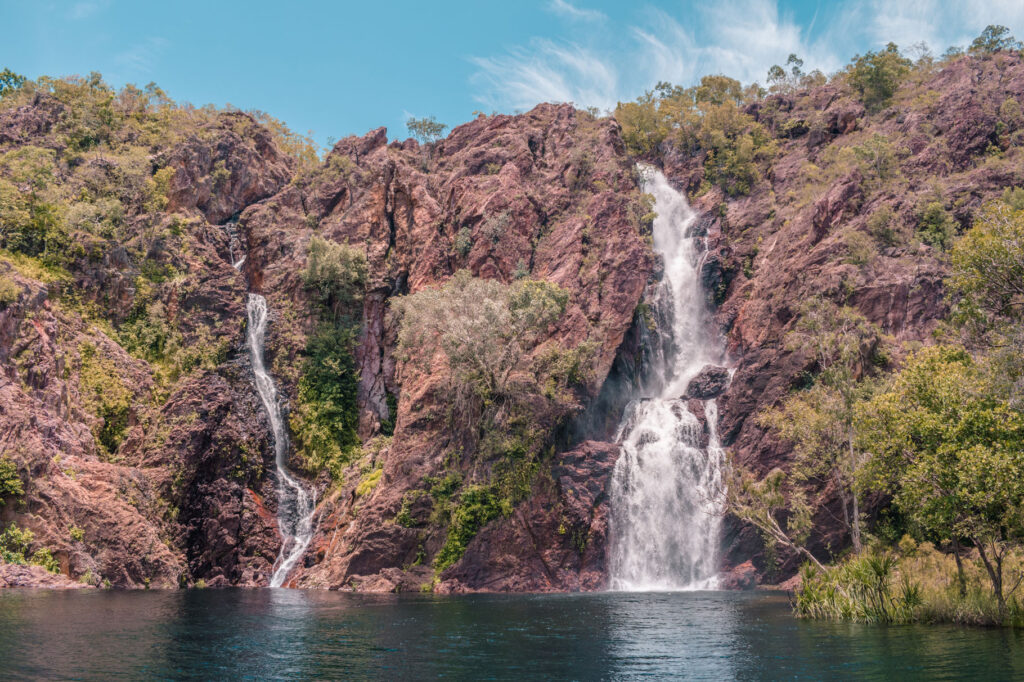
Day 11: Kakadu
Kakadu National Park
Badbong Wodjmeng Sandstone River Walk: 7.6km circuit
Barrk Sandstone Walk: 10km circuit
Angbang Billabong Walk: 4.2km circuit
Kubara Pools Walk: 6km out and back
Trekking/Trail running time: 8-9 hrs
Highlights
With almost 20,000 sq km of national park, choose to roam world-class rock art sites, climb to stunning waterfalls and plunge pools, hike along breathtaking escarpments.
Barrk Sandstone Trail: Initial steep climb takes you to the top of a rocky outcrop. Halfway through this rugged walk you’ll find one of the park’s cultural wonders at the Nanguluwurr art site. Paintings depicting spirits, animals, ships and people from different periods are all found here.
Angbangbang Billabong Walk: The fringing woodlands are home to more species of plants and animals than any other Kakadu habitat, including many birds.
Badbong-wodjmeng-sandstone-river-walk: The loop passes sandstone rocks, pandanus-fringed pools, and along the shores of the East Alligator River. Watch out for crocs! Don’t swim!
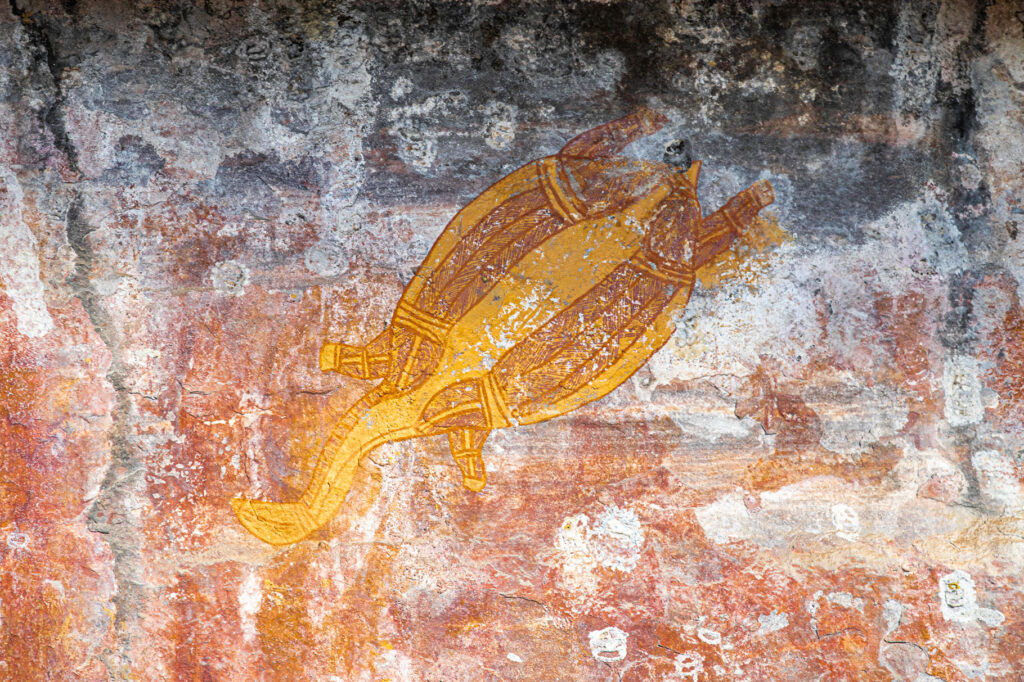
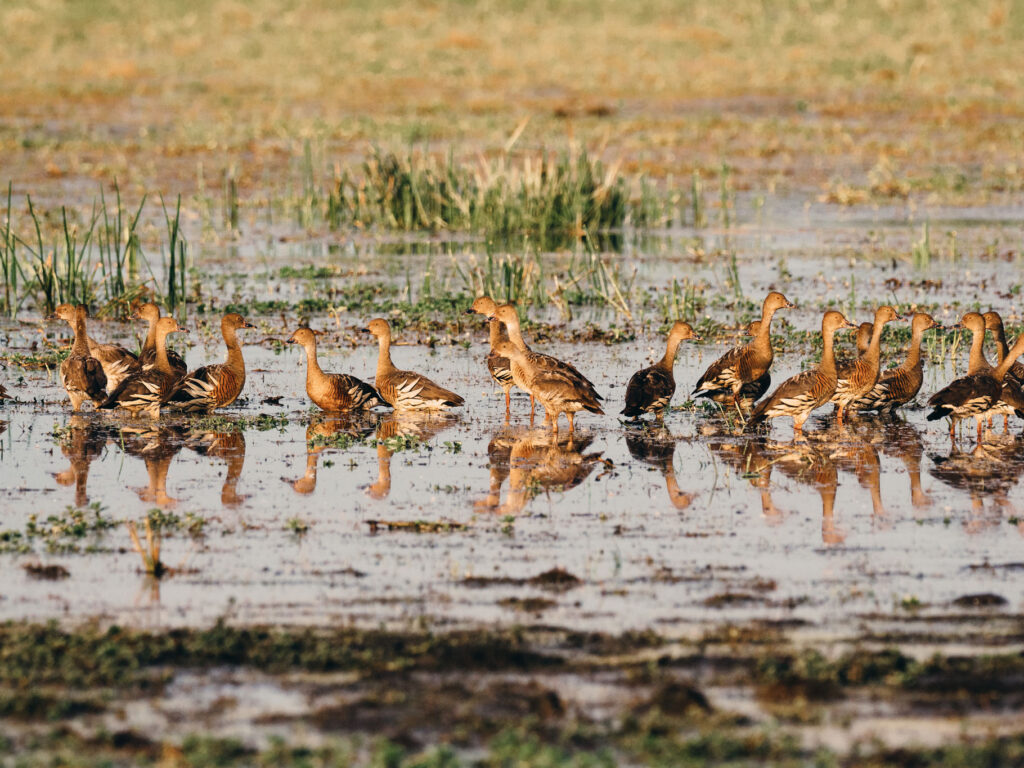
What goes on in the lead up to planning an expedition across multiple National Parks and a remote wilderness area?
- A realistic time frame set to plan out the logistics of the routes – both driving and trail routes.
- A budget that has contingency built into it for inflation and unforeseen costs!
- A clearly defined outline of what the goal of the project is and what the outcomes need to be for all parties involved.
- Putting together a team that has a variety of skills including logistics, nutrition, content creation, wilderness first aid, communication, the relevant physical fitness and the ability to work together for long periods of time in sometimes challenging circumstances.
- A training plan of min 16 weeks to build up the required fitness to take on 40km per day in some cases, on challenging, rocky trails
- Research into each of the trails and what to expect and how to access them – including any special requirements like 4-wheel drive access only, weather, track closures, permits and other transport required such as ferries.
- Connectivity and emergency equipment- in this wilderness area there will be only 4 or so opportunities when we will have mobile phone coverage, the rest of the time we will rely on Sat phones to communicate
- Connecting with like minded companies that share the same values and focus on sustainability and are inspired to be part of this project through supporting the team.
- Planning for and having the support in place for our families whilst we are away for two weeks.
- Realistic conversations with all team members around what mileage is sustainable over a period of just under 2 weeks in the given terrain/wilderness locations.
Expedition Partners
icebreaker
For 27 years, icebreaker has looked to nature to create natural, high-performing outdoor clothing as an alternative to synthetic-based apparel. Working with what nature provides and adapting as nature does, icebreaker enables people to join a movement towards a more natural way of living by taking unnecessary plastic out of performance apparel.
Fractel
“Our shift to a more sustainable business is happening right now. By implementing new methods of sourcing and manufacturing, we hope to not only build a platform for the future of Fractel, but also inspire other businesses to do the same. Beginning in 2021, we’re transforming our range of headwear to now be made using fabrics that incorporate recycled yarns. We’ve given a new life cycle to repossessed plastic bottles and recycled excess yarns that were once destined for landfill, now making them part of our latest high-performance products”.
Pure Nutrition
GirlsTrek
“GirlsTrek design and deliver unforgettable and unique trekking experiences that encompass the perfect girls getaway. Designed by women, for women, the common thread to all GirlsTrek trips is luxury without the pretence, hidden gems uncovered from days of research as well as serendipitous wanderings! Our trips are fun, challenging in parts, rewarding, and intend to provide you with one of the happiest times in your life.
“At GirlsTrek, the word ‘impact’ means so much to us – it’s central to everything we do. We are keenly aware of the impact a GirlsTrek experience has on not only the GirlTrekker who joins us but, quite significantly, on those around her too.”
We are excited to support Lisa and Luke on their epic adventure, uncovering ways for us all to be more conscious of our impact when we travel and adventure on the trails.
More Adventures like this
-
The Thorsborne Trail on Hinchinbrook Island, Queensland, is rated as one of the best multi-day hikes in Australia, and features in Lonely Planet’s “Epic Hikes of The World.” Just a few hours dri...
Thorsborne Trail
Hinchinbrook Island, QLD
-
Bikepacking the Queen Charlotte Track
Marlborough Sounds, New Zealand
-
Australia's most famous multi-day hike, the Overland Track is 65 km, six-day trek through the heart of the Cradle Mountain-Lake St Clair National Park.
The Overland Track
Tasmania







